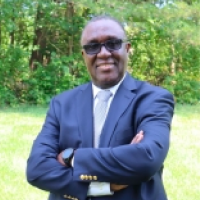I have just returned from Dakar, where I visited the infamous Mbeubeuss dump on the outskirts of the capital, where an entire community of "salvagers" have been making a living since 1968.
At first I saw a huge chaos of plastic piles in nets, cans flattened by dump trucks and hundreds of metal scraps. But after this first impression, I realized that this chaos is actually organized and that we may be looking at the beginning of a recycling process. Things are not always as informal as they seem. For example, as soon as a truck arrives, the collectors don't just go through the trash: depending on their specialty, they collect plastic, cans, wood, metal, clothes, and even organic waste sold as feed to industrial pig farms. Once they've sorted it, there's nothing left.
Senegal is well positioned to become a model of sustainable development in West Africa. GDP per capita is $1,500, well above the regional average of $1,000. The poverty rate is 38 percent, compared to the regional average of 45 percent. And 82 percent of the population has access to water and sanitation, compared to a regional rate of 62 percent.
However, waste management remains a major problem. In 2014, of the 2.4 million tons of solid waste generated by Senegal, nearly half (1.1 tons) was not collected. With only half of the population receiving garbage collection services, waste is commonly dumped in illegal dumps or burned in the open. Poor waste management poses health risks and environmental challenges that must be addressed.
On March 5, 2020, the World Bank's Board of Executive Directors approved a new $125 million project specifically to help address municipal waste management in Senegal and protect the health and safety of waste pickers. Mbeubeuss, Dakar's main landfill and one of the largest in West Africa, will be the focus of this program. Currently, waste collected in Dakar is accumulated there but not treated, and the site continues to expand. Over time, the Mbeubeuss landfill has become a major source of air, soil and water pollution.
Established in 1968 on a drying lake in a floodplain near the capital, not far from the sea, the landfill covered 14 hectares in 1978. Today, 1,300 tons of garbage are dumped every day by 230 trucks on 114 hectares. About 2,000 people work there, united in the Bokk Djom ("our common pride") association. They collect, wash and sell whatever they can find.
I met Mr. Ndiaye, who earns 3,000 CFA francs ($5) a day washing plastic waste, while Mr. Gueye receives 250 CFA francs ($0.40) per kilo of metal sold. Or Mr. Seck, who is 70 years old, prides himself on "living off the dump" for 50 years. He employs more than 100 salvagers who sell him the waste, and when asked why he chose this job, he says, "You only see garbage. We see a treasure.
A total of 571 women work at Mbeubeuss, competing with younger, stronger men and often earning far less than they do. About 200 children also live and work here. Some were born on the site, others arrived with their families, and still others have run away and seek refuge on the dump. Street vendors line the waste piles, offering meals and snacks. Cows wander in search of food, as life continues around the site.
The 475,000 tons of waste that are dumped at the landfill each year affect not only the health of the waste pickers, but also the families, farmers and ranchers who live nearby. Many factors compound the health risks: air pollution from smoldering underground fires and open burning of waste, soil and groundwater contamination, and the presence of persistent organic pollutants.
These are clear signals that while this informal recycling work is a livelihood or temporary solution, it is also essential to treat and manage much of the waste to ensure a sustainable solution.
The new program will include social, entrepreneurial and skills development measures for those who depend on the landfill for their livelihoods. Secure access to the site, discouraging the use of waste incineration, and providing a health program will improve conditions for waste pickers. Targeted childcare and school enrollment will keep children away from the dump.
It will specifically target coastal cities to reduce dumping of waste into the ocean, knowing that in 2012 these cities generated 129 million cubic meters of untreated waste (a). Garbage collection is expected to boost tourism, a key driver of the Senegalese economy.
The country's rapid urbanization, which is expected to increase from 48% today to 62% in 2025, will put pressure on cities' ability to manage waste collection and treatment. According to the What a Waste (a) report, waste generation is expected to more than triple by 2050. We will work with the Global Environment Facility and the French and Spanish national development agencies to provide coordinated support.


